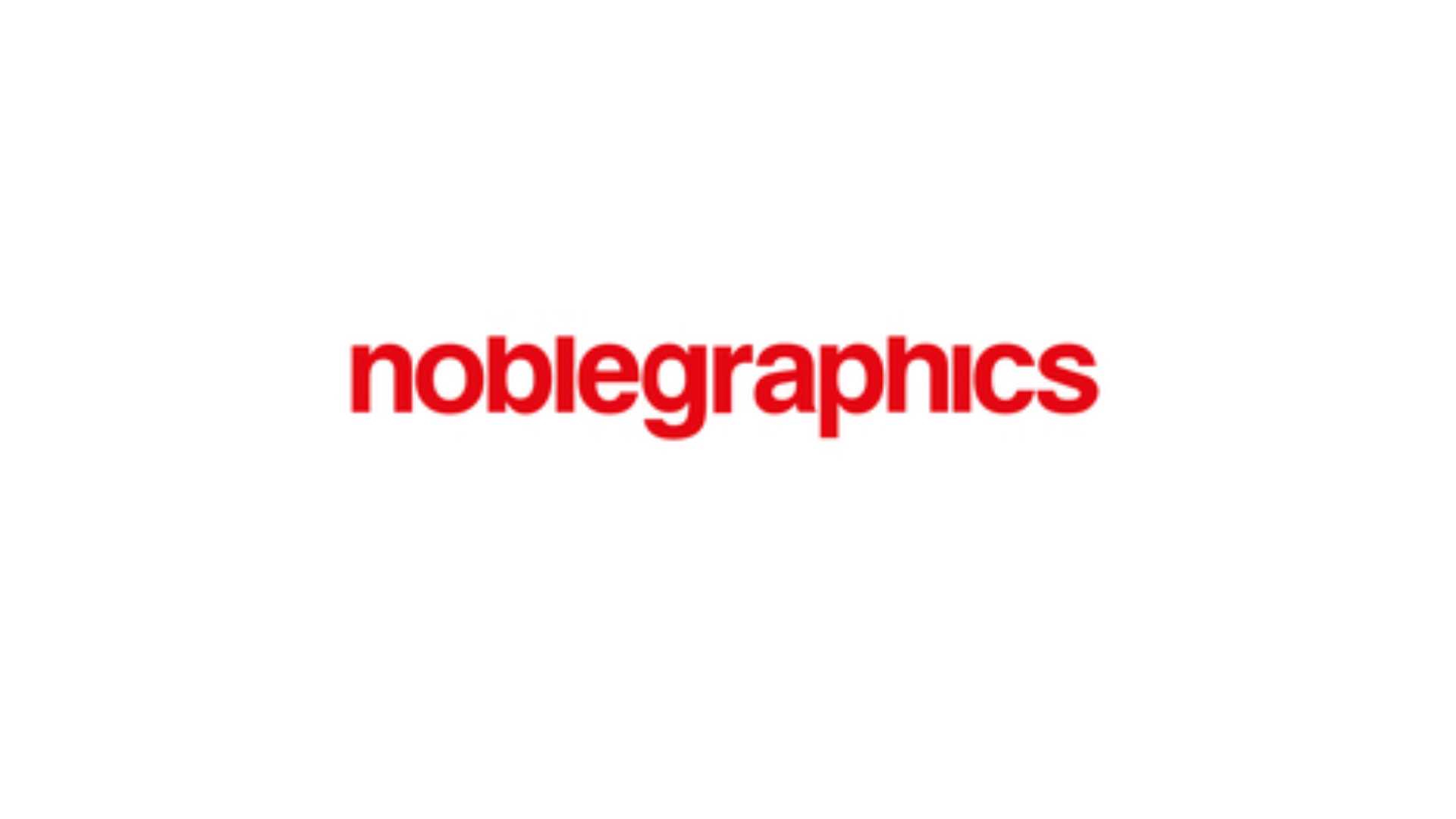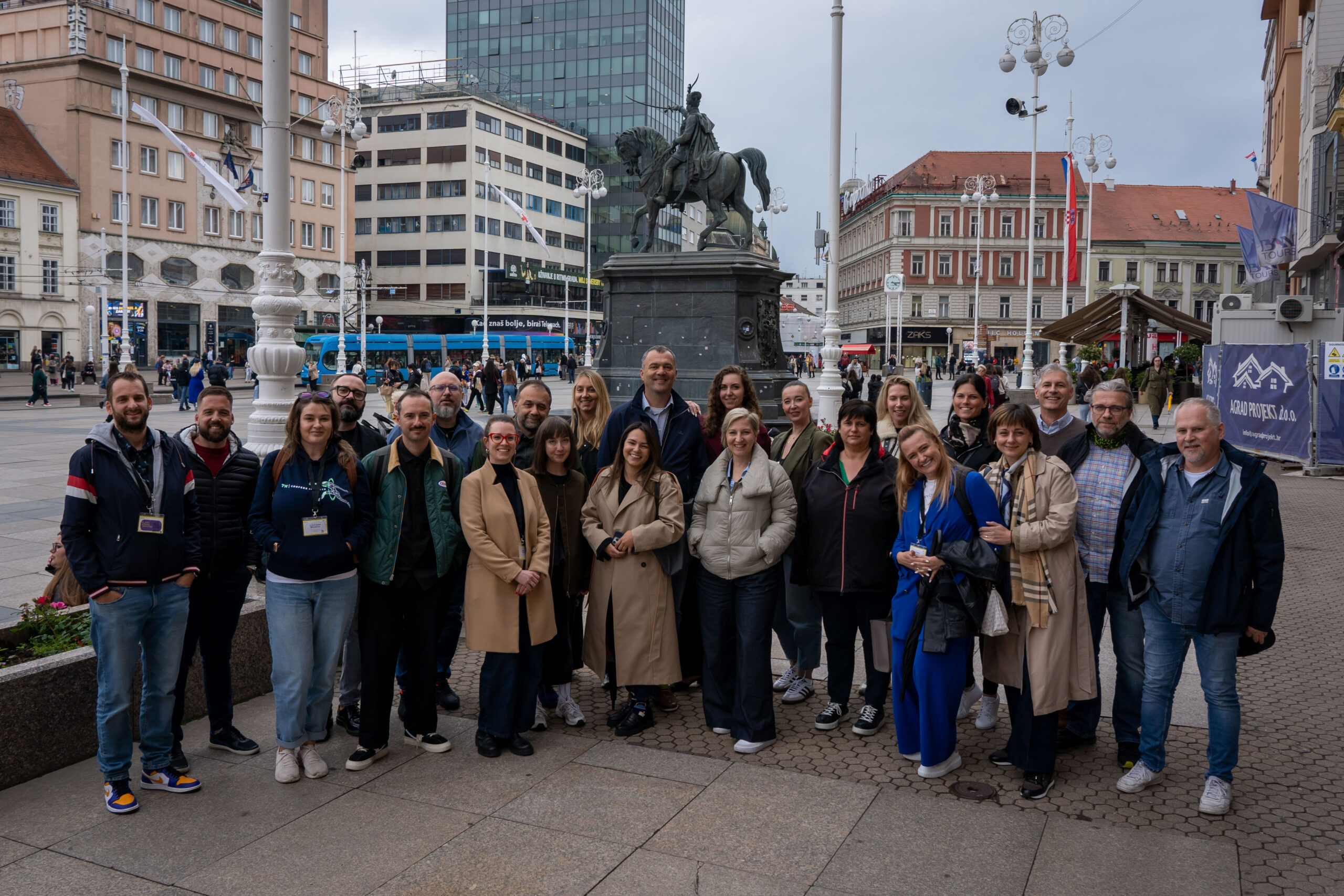Excerpt from the CANnual Report 2017
In terms of digital ad spending, there have not been rearrangements compared to 2015: the Visegrad countries and Russia are still in the lead. In 2016, the proportion of digital ad spending grew by 5% within the advertising pie at a regional level, so it can be concluded that the majority of the CEE markets develop dynamically.
 In last year’s CANnual Report, we mentioned that online ad spending surpassed TV ad spending in only two CEE countries: the Czech Republic and Hungary. The club has a new member: in Lithuania, the share of online advertisements overtook that of television by 1% within the advertising pie (36% vs. 35%), thus the southernmost Baltic state entered the elite club of the most developed advertising markets of the region. Countries at the first place of the digital list – that is, Slovakia, Poland and Russia – may reach this milestone in 2017, because TV spending in these countries exceeds that of online only by 2-5%.
Although the regional map has not changed much in terms of digital ad spending in the last year, the frontrunners changed positions. Slovakia finished second (after last year’s fourth place), coming before Poland which retreated to the third place. Hungary, the fourth state of the V4, has not made it to the podium this year and it came fifth (as opposed to last year’s third place) behind Russia, the latter having 100 million Internet users.
The Czech Republic remains the digital king of the region. Internet penetration is the second highest here (83%) and Czech advertisers spend almost half of their budget on digital advertisements. Ad spending per capita reaches 54 EUR in the country, which is nearly three times the regional average (16 EUR) and it is also higher than that of 8 regional countries.
In last year’s CANnual Report, we mentioned that online ad spending surpassed TV ad spending in only two CEE countries: the Czech Republic and Hungary. The club has a new member: in Lithuania, the share of online advertisements overtook that of television by 1% within the advertising pie (36% vs. 35%), thus the southernmost Baltic state entered the elite club of the most developed advertising markets of the region. Countries at the first place of the digital list – that is, Slovakia, Poland and Russia – may reach this milestone in 2017, because TV spending in these countries exceeds that of online only by 2-5%.
Although the regional map has not changed much in terms of digital ad spending in the last year, the frontrunners changed positions. Slovakia finished second (after last year’s fourth place), coming before Poland which retreated to the third place. Hungary, the fourth state of the V4, has not made it to the podium this year and it came fifth (as opposed to last year’s third place) behind Russia, the latter having 100 million Internet users.
The Czech Republic remains the digital king of the region. Internet penetration is the second highest here (83%) and Czech advertisers spend almost half of their budget on digital advertisements. Ad spending per capita reaches 54 EUR in the country, which is nearly three times the regional average (16 EUR) and it is also higher than that of 8 regional countries.
 In Slovakia (ranking 2nd), the double-digit growth of digital ad spending continued: the amount spent on online ads increased by 23%. This steady strengthening is partly taking place thanks to the fact that the smartphone penetration is the highest in Slovakia within the whole region (two-third of the whole Slovak population and four fifth of youngsters own a smartphone) and 46% of Internet searches are made on phones.
In Slovakia (ranking 2nd), the double-digit growth of digital ad spending continued: the amount spent on online ads increased by 23%. This steady strengthening is partly taking place thanks to the fact that the smartphone penetration is the highest in Slovakia within the whole region (two-third of the whole Slovak population and four fifth of youngsters own a smartphone) and 46% of Internet searches are made on phones.
 The Polish advertising market was effected by several political and economic decisions of great consequence in the last one and a half years. “500 plus”, the new family assistance program of the Polish government – in which families receive a monthly allowance of 500 zlotys (approx. 115 EUR) per child –, boosted consumption and thus had a positive effect on the ad industry, too. On the other hand, the so-called “media re-polonization” bill of the Polish ruling party, the conservative Law and Justice, that would restrict the concentration of capital within the media market in the hands of foreign investors disrupted ad spending for months. Considering all these factors plus the actuality that 36% of Polish Internet users still use AdBlocker, it is a quite a result to stand on the podium of digital ranking. The fact that advertisers spend more on online video ads than advertisements in dailies tells a lot about the level of development of the Polish digital market.
The Russian media market also abounded in legal changes in 2016, but they mainly had an effect on the TV and OOH segments. Alike the above-mentioned Polish rule of law, the State Duma passed a bill banning foreign-owned companies from undertaking TV audience measurement research in the country and it also limits foreign ownership within any news provider at 20%. Despite this novelty, 2016 proved to be really successful for the Russian media market, especially in terms of the digital segment. Online ad spending reached 1.8 billion EUR, that is more than the overall ad spending of the Czech Republic for 2016 (including all media types).
In Hungary, the state interfered with media and ad market processes harshly mainly not by passing new laws, but by rearranging the map of owners. By now, a significant number of major mediums had been sold to pro-government owners and they became the beneficiaries of the central spending. According to Adex, the Prime Minister’s Office was the second biggest advertiser in Hungary in 2016, following the company Telekom. This trend does not damage the size of the market per se – experts say that there was a 14% increase in the overall market spending –, but it does serious damage to the quality of media and it can also have devastating consequences for its “watchdog” role. The influence of the state increased in the TV and print segments as well, but the digital market remains a relatively free and fast-developing sector under the current circumstances. In 2016, online ad spending grew by 22%, which was mainly driven by advertisements bought on global platforms. More than 50% of the digital ad spending was pocketed by international networks (e.g. Google and Facebook).
In Lithuania, the advertising market grew by an astonishing 18% in 2016 that was triggered primarily by the explosive 54% increase in digital ad spending. It is due to this incredible advancement that the country made it to the group of the most developed digital markets of the region from the middle group.
The Polish advertising market was effected by several political and economic decisions of great consequence in the last one and a half years. “500 plus”, the new family assistance program of the Polish government – in which families receive a monthly allowance of 500 zlotys (approx. 115 EUR) per child –, boosted consumption and thus had a positive effect on the ad industry, too. On the other hand, the so-called “media re-polonization” bill of the Polish ruling party, the conservative Law and Justice, that would restrict the concentration of capital within the media market in the hands of foreign investors disrupted ad spending for months. Considering all these factors plus the actuality that 36% of Polish Internet users still use AdBlocker, it is a quite a result to stand on the podium of digital ranking. The fact that advertisers spend more on online video ads than advertisements in dailies tells a lot about the level of development of the Polish digital market.
The Russian media market also abounded in legal changes in 2016, but they mainly had an effect on the TV and OOH segments. Alike the above-mentioned Polish rule of law, the State Duma passed a bill banning foreign-owned companies from undertaking TV audience measurement research in the country and it also limits foreign ownership within any news provider at 20%. Despite this novelty, 2016 proved to be really successful for the Russian media market, especially in terms of the digital segment. Online ad spending reached 1.8 billion EUR, that is more than the overall ad spending of the Czech Republic for 2016 (including all media types).
In Hungary, the state interfered with media and ad market processes harshly mainly not by passing new laws, but by rearranging the map of owners. By now, a significant number of major mediums had been sold to pro-government owners and they became the beneficiaries of the central spending. According to Adex, the Prime Minister’s Office was the second biggest advertiser in Hungary in 2016, following the company Telekom. This trend does not damage the size of the market per se – experts say that there was a 14% increase in the overall market spending –, but it does serious damage to the quality of media and it can also have devastating consequences for its “watchdog” role. The influence of the state increased in the TV and print segments as well, but the digital market remains a relatively free and fast-developing sector under the current circumstances. In 2016, online ad spending grew by 22%, which was mainly driven by advertisements bought on global platforms. More than 50% of the digital ad spending was pocketed by international networks (e.g. Google and Facebook).
In Lithuania, the advertising market grew by an astonishing 18% in 2016 that was triggered primarily by the explosive 54% increase in digital ad spending. It is due to this incredible advancement that the country made it to the group of the most developed digital markets of the region from the middle group.
 After having examined the strongest players of the ranking it is worth taking a look at the country that finished last: Serbia. In the current issue, Ljiljana Grmusa, the Serbian media market expert of weCAN quotes a Google study that lists countries by years in term of their level of digital development based on their online advertising expenditures. The result: it is 2022 in Great Britain and 2008 in Serbia. At the same time, Serbian users spend 10% more time with online content consumption than Brits. They consume 25% of media content online, while advertisers spend a little more than 10% of their budget on online ads. The underdevelopment of the Serbian digital advertising market – and supposedly the same holds true for other countries at the back of the ranking as well – is not related to user habits, but to the strategy of advertisers. The problem is, to quote Grmusa, that “they spend more money on places where people used to be than where people are right now”.
After having examined the strongest players of the ranking it is worth taking a look at the country that finished last: Serbia. In the current issue, Ljiljana Grmusa, the Serbian media market expert of weCAN quotes a Google study that lists countries by years in term of their level of digital development based on their online advertising expenditures. The result: it is 2022 in Great Britain and 2008 in Serbia. At the same time, Serbian users spend 10% more time with online content consumption than Brits. They consume 25% of media content online, while advertisers spend a little more than 10% of their budget on online ads. The underdevelopment of the Serbian digital advertising market – and supposedly the same holds true for other countries at the back of the ranking as well – is not related to user habits, but to the strategy of advertisers. The problem is, to quote Grmusa, that “they spend more money on places where people used to be than where people are right now”.
 In last year’s CANnual Report, we mentioned that online ad spending surpassed TV ad spending in only two CEE countries: the Czech Republic and Hungary. The club has a new member: in Lithuania, the share of online advertisements overtook that of television by 1% within the advertising pie (36% vs. 35%), thus the southernmost Baltic state entered the elite club of the most developed advertising markets of the region. Countries at the first place of the digital list – that is, Slovakia, Poland and Russia – may reach this milestone in 2017, because TV spending in these countries exceeds that of online only by 2-5%.
Although the regional map has not changed much in terms of digital ad spending in the last year, the frontrunners changed positions. Slovakia finished second (after last year’s fourth place), coming before Poland which retreated to the third place. Hungary, the fourth state of the V4, has not made it to the podium this year and it came fifth (as opposed to last year’s third place) behind Russia, the latter having 100 million Internet users.
The Czech Republic remains the digital king of the region. Internet penetration is the second highest here (83%) and Czech advertisers spend almost half of their budget on digital advertisements. Ad spending per capita reaches 54 EUR in the country, which is nearly three times the regional average (16 EUR) and it is also higher than that of 8 regional countries.
In last year’s CANnual Report, we mentioned that online ad spending surpassed TV ad spending in only two CEE countries: the Czech Republic and Hungary. The club has a new member: in Lithuania, the share of online advertisements overtook that of television by 1% within the advertising pie (36% vs. 35%), thus the southernmost Baltic state entered the elite club of the most developed advertising markets of the region. Countries at the first place of the digital list – that is, Slovakia, Poland and Russia – may reach this milestone in 2017, because TV spending in these countries exceeds that of online only by 2-5%.
Although the regional map has not changed much in terms of digital ad spending in the last year, the frontrunners changed positions. Slovakia finished second (after last year’s fourth place), coming before Poland which retreated to the third place. Hungary, the fourth state of the V4, has not made it to the podium this year and it came fifth (as opposed to last year’s third place) behind Russia, the latter having 100 million Internet users.
The Czech Republic remains the digital king of the region. Internet penetration is the second highest here (83%) and Czech advertisers spend almost half of their budget on digital advertisements. Ad spending per capita reaches 54 EUR in the country, which is nearly three times the regional average (16 EUR) and it is also higher than that of 8 regional countries.
 In Slovakia (ranking 2nd), the double-digit growth of digital ad spending continued: the amount spent on online ads increased by 23%. This steady strengthening is partly taking place thanks to the fact that the smartphone penetration is the highest in Slovakia within the whole region (two-third of the whole Slovak population and four fifth of youngsters own a smartphone) and 46% of Internet searches are made on phones.
In Slovakia (ranking 2nd), the double-digit growth of digital ad spending continued: the amount spent on online ads increased by 23%. This steady strengthening is partly taking place thanks to the fact that the smartphone penetration is the highest in Slovakia within the whole region (two-third of the whole Slovak population and four fifth of youngsters own a smartphone) and 46% of Internet searches are made on phones.
 The Polish advertising market was effected by several political and economic decisions of great consequence in the last one and a half years. “500 plus”, the new family assistance program of the Polish government – in which families receive a monthly allowance of 500 zlotys (approx. 115 EUR) per child –, boosted consumption and thus had a positive effect on the ad industry, too. On the other hand, the so-called “media re-polonization” bill of the Polish ruling party, the conservative Law and Justice, that would restrict the concentration of capital within the media market in the hands of foreign investors disrupted ad spending for months. Considering all these factors plus the actuality that 36% of Polish Internet users still use AdBlocker, it is a quite a result to stand on the podium of digital ranking. The fact that advertisers spend more on online video ads than advertisements in dailies tells a lot about the level of development of the Polish digital market.
The Russian media market also abounded in legal changes in 2016, but they mainly had an effect on the TV and OOH segments. Alike the above-mentioned Polish rule of law, the State Duma passed a bill banning foreign-owned companies from undertaking TV audience measurement research in the country and it also limits foreign ownership within any news provider at 20%. Despite this novelty, 2016 proved to be really successful for the Russian media market, especially in terms of the digital segment. Online ad spending reached 1.8 billion EUR, that is more than the overall ad spending of the Czech Republic for 2016 (including all media types).
In Hungary, the state interfered with media and ad market processes harshly mainly not by passing new laws, but by rearranging the map of owners. By now, a significant number of major mediums had been sold to pro-government owners and they became the beneficiaries of the central spending. According to Adex, the Prime Minister’s Office was the second biggest advertiser in Hungary in 2016, following the company Telekom. This trend does not damage the size of the market per se – experts say that there was a 14% increase in the overall market spending –, but it does serious damage to the quality of media and it can also have devastating consequences for its “watchdog” role. The influence of the state increased in the TV and print segments as well, but the digital market remains a relatively free and fast-developing sector under the current circumstances. In 2016, online ad spending grew by 22%, which was mainly driven by advertisements bought on global platforms. More than 50% of the digital ad spending was pocketed by international networks (e.g. Google and Facebook).
In Lithuania, the advertising market grew by an astonishing 18% in 2016 that was triggered primarily by the explosive 54% increase in digital ad spending. It is due to this incredible advancement that the country made it to the group of the most developed digital markets of the region from the middle group.
The Polish advertising market was effected by several political and economic decisions of great consequence in the last one and a half years. “500 plus”, the new family assistance program of the Polish government – in which families receive a monthly allowance of 500 zlotys (approx. 115 EUR) per child –, boosted consumption and thus had a positive effect on the ad industry, too. On the other hand, the so-called “media re-polonization” bill of the Polish ruling party, the conservative Law and Justice, that would restrict the concentration of capital within the media market in the hands of foreign investors disrupted ad spending for months. Considering all these factors plus the actuality that 36% of Polish Internet users still use AdBlocker, it is a quite a result to stand on the podium of digital ranking. The fact that advertisers spend more on online video ads than advertisements in dailies tells a lot about the level of development of the Polish digital market.
The Russian media market also abounded in legal changes in 2016, but they mainly had an effect on the TV and OOH segments. Alike the above-mentioned Polish rule of law, the State Duma passed a bill banning foreign-owned companies from undertaking TV audience measurement research in the country and it also limits foreign ownership within any news provider at 20%. Despite this novelty, 2016 proved to be really successful for the Russian media market, especially in terms of the digital segment. Online ad spending reached 1.8 billion EUR, that is more than the overall ad spending of the Czech Republic for 2016 (including all media types).
In Hungary, the state interfered with media and ad market processes harshly mainly not by passing new laws, but by rearranging the map of owners. By now, a significant number of major mediums had been sold to pro-government owners and they became the beneficiaries of the central spending. According to Adex, the Prime Minister’s Office was the second biggest advertiser in Hungary in 2016, following the company Telekom. This trend does not damage the size of the market per se – experts say that there was a 14% increase in the overall market spending –, but it does serious damage to the quality of media and it can also have devastating consequences for its “watchdog” role. The influence of the state increased in the TV and print segments as well, but the digital market remains a relatively free and fast-developing sector under the current circumstances. In 2016, online ad spending grew by 22%, which was mainly driven by advertisements bought on global platforms. More than 50% of the digital ad spending was pocketed by international networks (e.g. Google and Facebook).
In Lithuania, the advertising market grew by an astonishing 18% in 2016 that was triggered primarily by the explosive 54% increase in digital ad spending. It is due to this incredible advancement that the country made it to the group of the most developed digital markets of the region from the middle group.
 After having examined the strongest players of the ranking it is worth taking a look at the country that finished last: Serbia. In the current issue, Ljiljana Grmusa, the Serbian media market expert of weCAN quotes a Google study that lists countries by years in term of their level of digital development based on their online advertising expenditures. The result: it is 2022 in Great Britain and 2008 in Serbia. At the same time, Serbian users spend 10% more time with online content consumption than Brits. They consume 25% of media content online, while advertisers spend a little more than 10% of their budget on online ads. The underdevelopment of the Serbian digital advertising market – and supposedly the same holds true for other countries at the back of the ranking as well – is not related to user habits, but to the strategy of advertisers. The problem is, to quote Grmusa, that “they spend more money on places where people used to be than where people are right now”.
After having examined the strongest players of the ranking it is worth taking a look at the country that finished last: Serbia. In the current issue, Ljiljana Grmusa, the Serbian media market expert of weCAN quotes a Google study that lists countries by years in term of their level of digital development based on their online advertising expenditures. The result: it is 2022 in Great Britain and 2008 in Serbia. At the same time, Serbian users spend 10% more time with online content consumption than Brits. They consume 25% of media content online, while advertisers spend a little more than 10% of their budget on online ads. The underdevelopment of the Serbian digital advertising market – and supposedly the same holds true for other countries at the back of the ranking as well – is not related to user habits, but to the strategy of advertisers. The problem is, to quote Grmusa, that “they spend more money on places where people used to be than where people are right now”.












